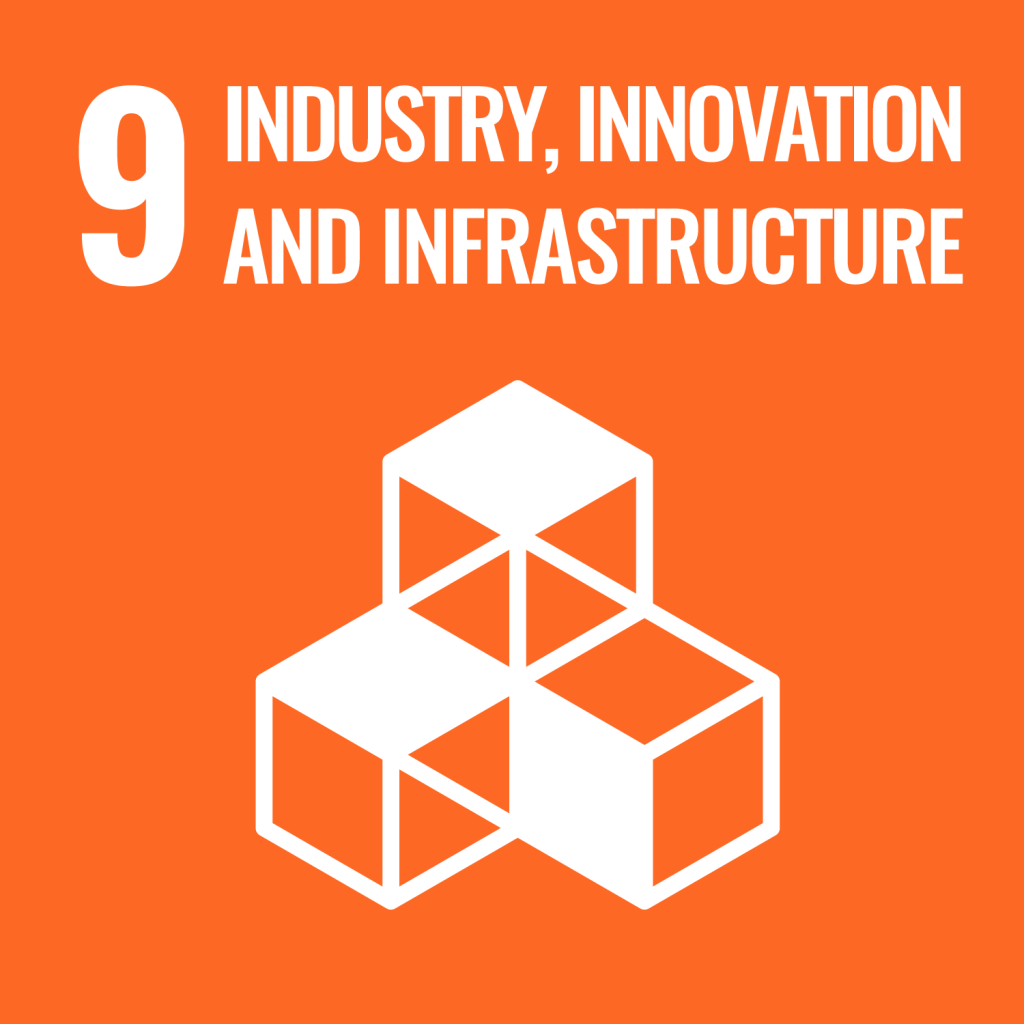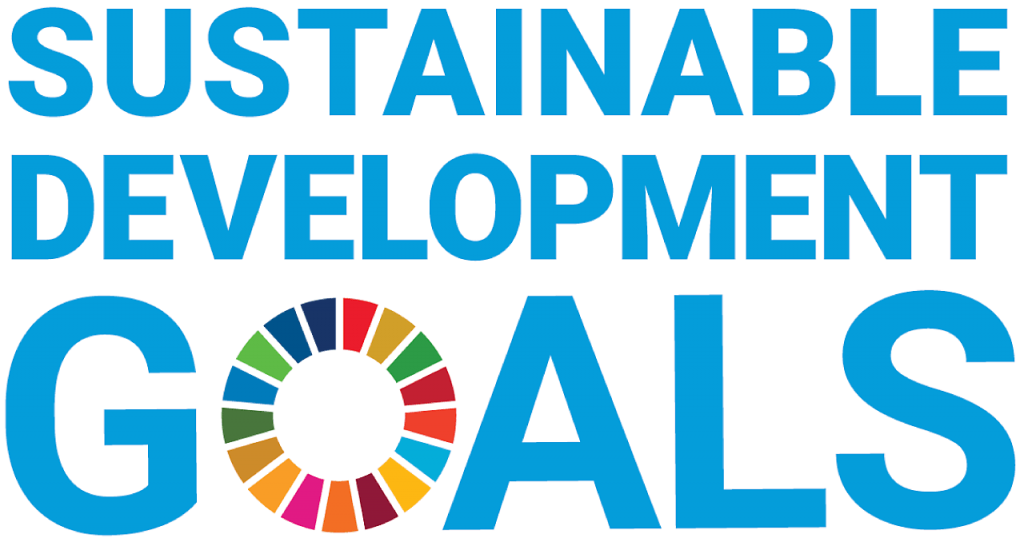
SDG 9:
INDUSTRY, INNOVATION AND INFRASTRUCTURE

Goal 9 of the UN Sustainable Development Goals aims to build resilient infrastructure, promote inclusive and sustainable industrialization, and foster innovation. This goal recognizes the crucial role of infrastructure and industry in driving economic growth and development, while also emphasizing the need for sustainability and inclusivity.
<span data-metadata=""><span data-buffer="">TARGET 9.1
Develop sustainable, resilient and inclusive infrastructures
Develop quality, reliable, sustainable and resilient infrastructure, including regional and transborder infrastructure, to support economic development and human well-being, with a focus on affordable and equitable access for all.
<span data-metadata=""><span data-metadata=""><span data-buffer="">INDICATOR 9.1.1
<span data-buffer="">Road access for rural populations<span data-metadata="">
Indicator 9.1.1 is the “proportion of the rural population who live within 2 km of an all-season road” in the UN SDG framework.
An “all-season road” is defined as a road that is motorable all year round by the prevailing means of rural transport, and is not likely to be impassable for 7 days or more each year. Predictable interruptions of short duration during inclement weather (e.g. heavy rainfall) are accepted, particularly on low volume roads.
Nearly all Israelis (almost 100%) have easy access to roads usable year-round, with most living within 2 kilometers.
<span data-metadata=""><span data-metadata=""><span data-buffer="">INDICATOR 9.1.2
<span data-buffer="">Passenger and freight volumes
Indicator 9.1.2 is “passenger and freight volumes, by mode of transport” in the UN SDG framework.
Passenger and freight volumes are respectively measured in passenger-kilometers and tonne-kilometers, and broken down by mode of transport. These measures refer to the number of passengers or tonnes, multiplied by how many kilometers they were carried.
Data for this indicator related to passenger-kilometers on rail (first chart) and air (second chart), and tonne-kilometers of freight by air (third chart) are shown in the interactive visualizations.
<span data-metadata=""><span data-buffer="">TARGET 9.2
Promote inclusive and sustainable industrialization
Promote inclusive and sustainable industrialization and, by 2030, significantly raise industry’s share of employment and gross domestic product, in line with national circumstances, and double its share in least developed countries.
<span data-metadata=""><span data-metadata=""><span data-buffer="">INDICATOR 9.2.1
<span data-buffer="">Manufacturing value<span data-buffer="">
Indicator 9.2.1 is “manufacturing value added as a proportion of GDP and per capita” in the UN SDG framework.
This indicator measures the manufacturing sector’s contribution to a country’s total gross domestic product (GDP). Value added is the net output of a sector after adding up all outputs and subtracting intermediate inputs in manufacturing production.
<span data-metadata=""><span data-metadata=""><span data-buffer="">INDICATOR 9.2.2
<span data-buffer="">Manufacturing employment<span data-buffer="">
Indicator 9.2.2 is “manufacturing employment as a proportion of total employment” in the UN SDG framework.
This indicator measures the manufacturing sector’s employment as a share of the country’s total employment. Employment refers to all persons of working age who, during a specified brief period, were in paid employment (whether at work or with a job but not at work) or in self-employment (whether at work or with an enterprise but not at work).
<span data-metadata=""><span data-buffer="">TARGET 9.3
Increase access to financial services and markets
Increase the access of small-scale industrial and other enterprises, in particular in developing countries, to financial services, including affordable credit, and their integration into value chains and markets.
<span data-metadata=""><span data-metadata=""><span data-buffer="">INDICATOR 9.3.1
<span data-buffer="">Value of small-scale industry<span data-buffer="">
Indicator 9.3.1 is the “proportion of small-scale industries in total industry value added” in the UN SDG framework.
Data for this indicator is shown in the interactive visualization.
<span data-metadata=""><span data-metadata=""><span data-buffer="">INDICATOR 9.3.2
<span data-buffer="">Small-scale industries with affordable credit<span data-buffer="">
Definition of the SDG indicator: Indicator 9.3.2 is the “proportion of small-scale industries with a loan or line of credit”, in the UN SDG framework.
Data for this indicator is shown in the interactive visualization.
<span data-metadata=""><span data-buffer="">TARGET 9.4
Upgrade all industries and infrastructures for sustainability
By 2030, “ensure that all men and women, in particular the poor and the vulnerable, have access to basic services.”2 This sets a target of universal access to basic services for all households.
<span data-metadata=""><span data-metadata=""><span data-buffer="">INDICATOR 9.4.1
<span data-metadata=""><span data-buffer="">CO2 emissions per unit of value added
Indicator 9.4.1 is “CO2 emissions per unit of value added” in the UN SDG framework.
This indicator is a measure of carbon intensity; it reports the quantity of carbon dioxide emitted per unit of economic value (kilograms of CO2 emitted per dollar of GDP).
Data for this indicator is shown in the interactive visualization.
<span data-metadata=""><span data-buffer="">TARGET 9.5
Enhance research and upgrade industrial technologies
Enhance scientific research, upgrade the technological capabilities of industrial sectors in all countries, in particular developing countries, including, by 2030, encouraging innovation and substantially increasing the number of research and development workers per 1 million people and public and private research and development spending.
<span data-metadata=""><span data-metadata=""><span data-buffer="">INDICATOR 9.5.1
<span data-metadata=""><span data-buffer="">Research and Development (R&D) spending
Indicator 9.5.1 is “research and development expenditure as a proportion of GDP” in the UN SDG framework.
This indicator measures expenditure on research and development (R&D) activities as a percentage of total gross domestic product (GDP) of a given country.
Expenditures for research and development are current and capital expenditures (both public and private) on creative work undertaken systematically to increase knowledge, including knowledge of humanity, culture, and society, and the use of knowledge for new applications. R&D covers basic research, applied research, and experimental development.
<span data-metadata=""><span data-buffer="">TARGET 9.B
Support domestic technology development and industrial diversification
Support domestic technology development, research and innovation in developing countries, including by ensuring a conducive policy environment for, [among other things], industrial diversification and value addition to commodities.
<span data-metadata=""><span data-metadata=""><span data-buffer="">INDICATOR 9.B.1
<span data-buffer="">Medium and high-tech industry<span data-metadata="">
Indicator 9.b.1 is the “proportion of medium and high-tech industry value added in total value added” in the UN SDG framework.
This indicator measures the share of a country’s manufacturing value added which is derived from medium to high-tech industry outputs. Higher values indicate that a country’s industrial sector is more focused on high-tech manufacturing.
<span data-metadata=""><span data-buffer="">TARGET 9.C
Support domestic technology development and industrial diversification
Support domestic technology development, research and innovation in developing countries, including by ensuring a conducive policy environment for, [among other things], industrial diversification and value addition to commodities.
<span data-metadata=""><span data-buffer="">TARGET 9.C.1
<span data-buffer="">Medium and high-tech industry<span data-metadata="">
Indicator 9.b.1 is the “proportion of medium and high-tech industry value added in total value added” in the UN SDG framework.
This indicator measures the share of a country’s manufacturing value added which is derived from medium to high-tech industry outputs. Higher values indicate that a country’s industrial sector is more focused on high-tech manufacturing.
<span data-buffer="">Data Source Attribution<span data-buffer="">
<span data-buffer="">SDG Target and Indicator Definitions:<span data-buffer="">
The definitions and descriptions of the Sustainable Development Goal (SDG) targets and indicators used on this website are credited to Our World in Data team (2023) – “SDG Tracker: Measuring progress towards the Sustainable Development Goals” Published online at OurWorldInData.org. Retrieved from: https://ourworldindata.org/sdgs
<span data-buffer="">Data for Graphs:<span data-buffer="">
Data used in the graphs and charts on this website were sourced from:
- Our World in Data
- National Insurance Institute of Israel
- Israel Central Bureau of Statistics
<span data-buffer="">Additional Notes:<span data-buffer="">
Built by students in the Sustainability and Information Technology course, University of Haifa.
Information updated as of March 2, 2024. We strive to provide accurate and up-to-date information. We encourage you to visit the websites of these organizations for further details and the latest data releases.

